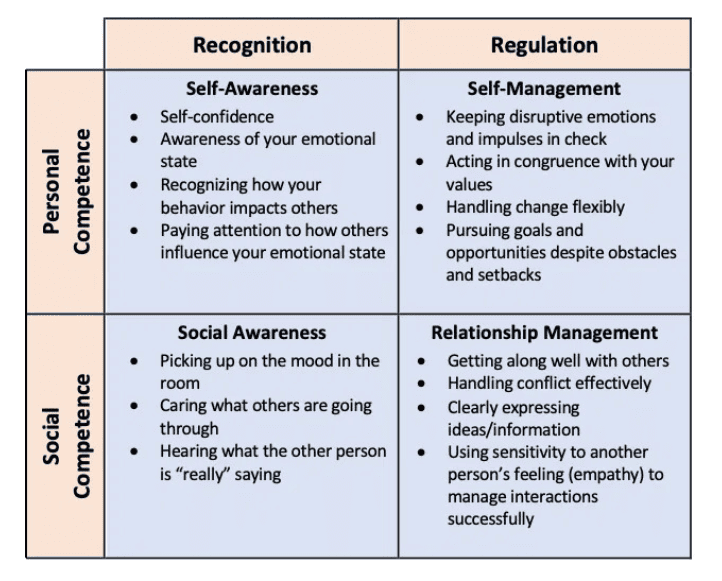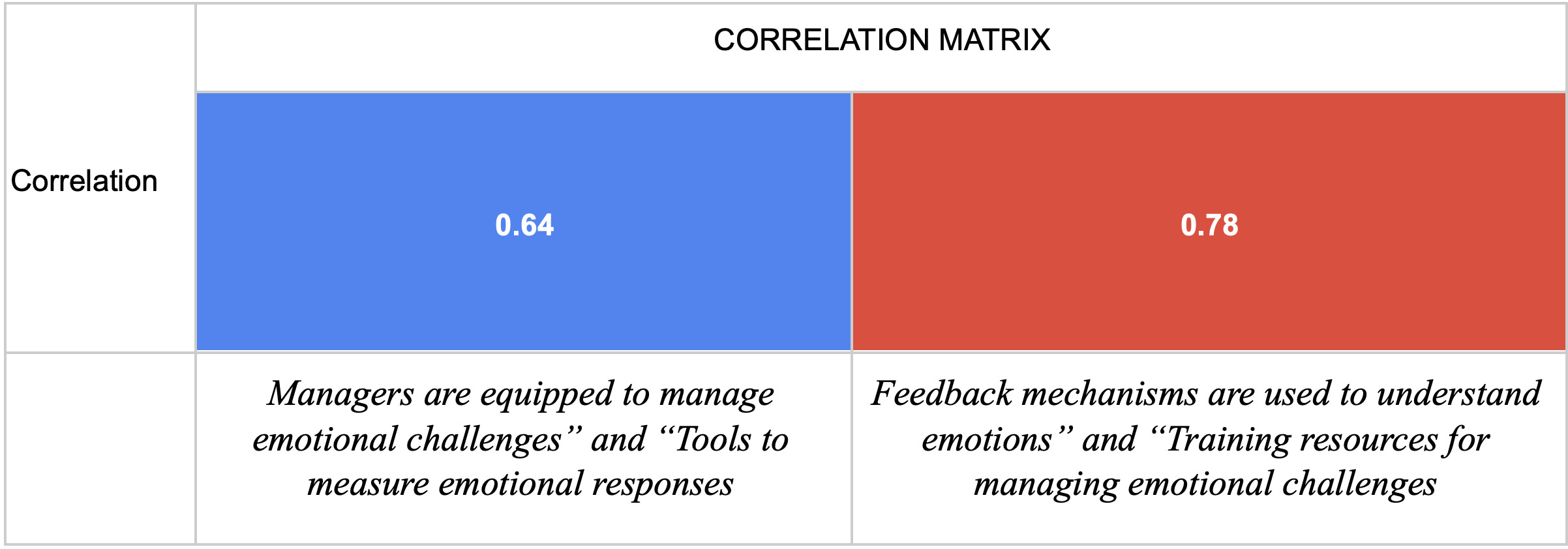By Teimurazi Suladze, Supervised by Dr. Anna Rostomyan
Introduction
Organizational change is often accompanied by a range of emotional responses that either drive or hinder the transformation process. Change is an inevitable part of organizational growth and survival in a competitive business environment. However, navigating the emotional responses during such transformations poses significant challenge.
Employees often experience uncertainty, fear and resistance, which, if unaddressed can derail even the most well-planned initiatives within the organizations. Effective management of these emotions is crucial for leaders aiming to ensure smooth transitions and mitigate resistance. Leaders play a pivotal role in managing these emotions by creating a workplace of trust, empathy and open communication.
This article explores strategies that leaders can use to harness emotions during organizational transformations and discusses methods organizations can adopt to measure and address emotional resistance. Drawing on survey data, the article presents actionable insights into leadership practices, emotional intelligence and communication techniques, while providing frameworks and tools to track and mitigate negative emotional impacts.
Literature Review
Emotional Intelligence and Leadership in Change Management
Emotional Intelligence (EI) is a cornerstone of effective leadership during organizational change. Goleman (1995) identifies self-awareness, self-regulation, empathy, motivation and social skills as key components of EI.

Leaders with high EI can better understand and respond to employees’ emotional needs, building resilience and commitment during transitions. Research highlights that emotionally intelligent leaders are more successful in creating supportive workplace environments and addressing resistance proactively (Bradberry & Greaves, 2009).
Moreover, leaders with advanced emotional intelligence tend to excel in conflict resolution and maintaining team morale during challenging times. They leverage their understanding of group dynamics and individual concerns to tailor their communication and actions. Studies suggest that integrating EI into leadership development programs can significantly enhance organizational adaptability to change, creating a culture where employees feel valued and heard.
Emotional Resistance in Organizational Change
Resistance to change often stems from fear of unknown, perceived threats to job security, or lack of trust in leadership. Kotter (1995) emphasizes that unaddressed emotional resistance can lead to cynicism, decreased morale and reduced productivity. Emotional resistance manifests in various ways and forms, from passive disengagement to active opposition and addressing these reactions requires nuances and empathetic approaches. Recent studies highlight the role of perceived fairness in mitigating resistance. When Employees feel that change processes are transparent and inclusive, they are more likely to support transformation efforts. Implementing participatory decision-making models and ensuring consistent recognition of employee contributions can potentially reduce emotional barriers and create sense of shared purpose.
Measuring Emotional Impact
Effective measurement of emotional responses provides organizations with valuable insights into employee sentiments. Tools such as surveys, feedback mechanisms, and sentiment analysis can help track emotional trends and identify areas requiring intervention. Regular assessment and review of strategies are essential to align organizational objectives with employee well-being (Cameron & Green, 2020).
Additionally, longitudinal tracking of emotional metrics can reveal patterns and enable predictive modeling for potential resistance points. Organizations increasingly use digital platforms to aggregate real-time feedback, allowing leaders to adapt strategies dynamically. For instance, AI-powered sentiment analysis can decode subtle emotional cues from open-text feedback, offering a granular understanding of employee sentiment. Combining these insights with periodic reviews ensures that emotional management strategies remain relevant and effective over time.
The Role of Organizational Culture in Emotional Managment
Organizational culture significantly influences how emotions are perceived and managed during change. A culture that prioritizes psychological safety enables employees to express their concerns and emotions without fear and retaliation. Edmondson (1999) emphasizes that urging psychological safety can lead to increased engagement and innovation during organizational change. Leaders can cultivate this environment by promoting open communication, encouraging collaboration and addressing conflicts constructively.
Organizations with strong cultures of adaptability tend to view change as an opportunity rather than a threat. These cultures promote continuous learning, resilience and alignment of individual goals with organizational objectives. Training programs, team-building activities, and recognition systems can further reinforce cultural values that support emotional well-being during change initiatives.
Interplay Between Communication and Emotional Responses
Communication Strategies play a pivotal role in shaping emotional responses to organizational change. Clarity, consistency, and transparency in messaging can reduce uncertainty and build trust among employees. Clampitt, DeKoch, and Cashman (2000) argue that frequent updates and clear communication of change objectives are essential in mitigating resistance.
Two way communication mechanisms, such as feedback sessions and open forums, allow employees to voice their concerns and provide input on change processes. This participatory approach not only enhances trust but also increases employee commitment to organizational goals. Leaders who actively listen and address feedback demonstrate empathy, which can significantly alleviate employees’ negative emotional responses towards change.
Research Questions
During literature analysis two main questions came to my mind. “What strategies can leaders use to effectively manage and harness emotions during periods of organizational transformation/change?”; “How can organizations measure and address emotional resistance to ensure smoother transitions during change?”. This research article will initiate research and analysis to try and answer these questions.
Methodology
Data Collection
The primary dataset used in this study consists of 40 entries (HR professionals, managers, leaders, and employees from companies that experienced change in organization) with 19 variables including Likert-scale responses on leadership practices, emotional intelligence and organizational strategies for managing change. These data were analyzed to identify trends, correlations and come up with actionable insights.
Data Analysis techniques
Data analysis involved a mixed-method approach. Descriptive statistics, including mean, median and mode were used to summarize employee perceptions of Likert-scale responses. Pearson’s correlation coefficient was employed to examine the relationship between emotional challenges and leadership practices. Finally, Thematic analysis was conducted to identify common themes related to emotional challenges and successful leadership practices.
Results and Findings
The responses reveal that fear of uncertainty and concerns about job security are the most prominent emotional challenges faced by employees. Leadership practices, such as creating supportive environments (mean score 3,775) and openly communicating about changes (mean score 3.575), were rated moderately well, indicating efforts by leaders to address emotional concerns. However, areas such as proactively addressing resistance (mean score 3.05) and regularly reviewing strategies to mitigate emotional resistance (mean score 3.0) received lower ratings, suggesting significant opportunities for improvement. Opinions on emotional intelligence and drivers of resistance also varied widely, pointing to diverse perspectives across different organizational roles.
The correlation analysis further underscores the importance of structured approach in managing emotional resistance. Strong positive relationships were observed between equipping managers to handle emotional challenges and the use of tools to measure emotional responses (correlation coefficient 0.64). Organizations that actively use feedback mechanisms also tend to provide intensive training programs and resources to their leaders and employees during or before change is initiated with a strong correlation of 0.78 between these variables. Emotional intelligence training aligns closely with the regular review of resistance strategies (0.61), while proactive leadership correlates switch well-trained managerial teams (0.67). These findings highlight that organizations focusing on consistent training, emotional intelligence and feedback mechanisms are better equipped to address resistance effectively.
Results Highlights
High Ratings – Fear of uncertainty or job security impacts emotional resistance” received the highest mean rating (3.9), indicating significant employee concerns about job security during changes.
Moderate Ratings – Statements such as “Leaders communicate openly about organizational changes” (mean of 3.575) reflect moderate agreement on leadership’s transparency.
Low Ratings – “Leadership takes proactive steps to address emotional resistance” (mean of 3.05) underscores the need for improvement in this area.
Responses to “Resistance to change is driven by emotional factors” and “Leaders demonstrate high emotional intelligence” showed high standard deviations (∼1.2–1.4), suggesting diverse employee opinions for this subject matter.
Positive Correlations for statements like Managers are equipped to manage emotional challenges” and “Tools to measure emotional responses” (0.64); Feedback mechanisms are used to understand emotions” and “Training resources for managing emotional challenges” (0.78) indicate that structured feedback mechanisms and regular training enhance an organization’s capacity to manage emotional resistance during change.

Recommendations
Based on the findings of this research, organizations seeking to to effectively manage emotions during periods of organizational change should prioritize leadership development. Investing in comprehensive training programs that equip leaders with necessary skills to understand and empathize with employees’ emotions, communicate change effectively and transparently, create and maintain supportive and inclusive environments and proactively identify and address potential sources of emotional resistance is a crucial step for the organizations. Furthermore, implementing robust measurement systems during change is an essential factor as well. Organizations should utilize a variety of methods, such as surveys, focus groups and observations to identify emerging challenges and adjust strategies accordingly. Additionally, ensuring that feedback mechanisms are anonymous and confidential will encourage honest and open communication from employees.
Conclusion
Emotions play a pivotal role in the success or failure of organizational change initiatives. Leaders equipped with emotional intelligence, effective communication strategies and proactive measures can mitigare resistance and create positive work environments for transformation. Regular assessment of emotional trends and the adoption of evidence-based frameworks further enhance the organization’s capacity to navigate change. Future research should explore longitudinal studies to evaluate the long-term impact of these strategies on organizational performance.
References
-
Bradberry, T., & Greaves, J. (2009). Emotional Intelligence 2.0. San Diego: TalentSmart.
-
Cameron, E., & Green, M. (2020). Making Sense of Change Management: A Complete Guide to the Models, Tools, and Techniques of Organizational Change. Kogan Page Publishers.
-
Clampitt, P. G., DeKoch, R. J., & Cashman, T. (2000). A Strategy for Communicating Organizational Change. Sloan Management Review, 41(2).
-
Edmondson, A. C. (1999). Psychological Safety and Learning Behavior in Work Teams.Administrative Science Quarterly, 44(2).
-
Goleman, D. (1995). Emotional Intelligence: Why It Can Matter More Than IQ. BantamBooks.
-
Kotter, J. P. (1995). Leading Change:Why Transformation Efforts Fail. Harvard Business Review Press.


































